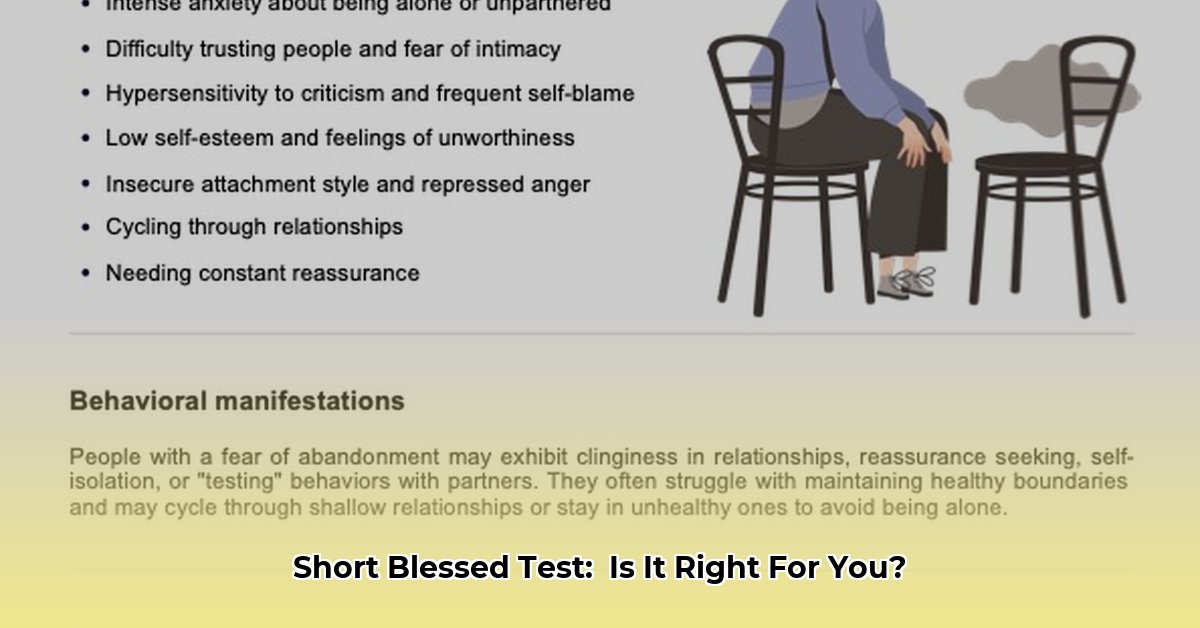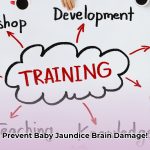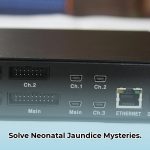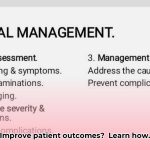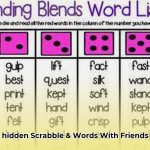This guide provides a comprehensive overview of the Short Blessed Test (SBT), a screening tool for cognitive decline. We’ll explore its purpose, administration, scoring, and interpretation, tailoring the information for patients, caregivers, healthcare professionals, and researchers.
What is the SBT?
The Short Blessed Test (SBT), also known as the Orientation-Memory-Concentration Test, is a brief assessment used to screen for cognitive impairment, particularly in older adults. It’s not a diagnostic tool for specific conditions like Alzheimer’s disease but can suggest the need for more comprehensive evaluations. The SBT focuses on orientation, registration, and attention, key areas often affected by cognitive decline.
How Does the SBT Work?
The SBT involves a series of six straightforward questions and tasks, typically taking 5-10 minutes to administer. A healthcare professional guides the individual through the questions, recording their responses for scoring. Before question 3, a name and address are presented for later recall, assessing short-term memory.
Sample SBT Questions:
- What year is it right now?
- What month are we in?
- What time is it approximately? (An estimated answer is acceptable.)
- Count backward from 20 to 1.
- List the months of the year in reverse, starting with December.
- Recall the name and address provided earlier.
Administering the SBT: A Step-by-Step Guide
Proper administration is crucial for accurate SBT results. This section provides a detailed guide for healthcare professionals:
-
Preparation: Choose a quiet, comfortable setting to minimize distractions. Have the SBT form and a pen ready. Explain the test’s purpose to the individual, reassuring them that it’s a routine check.
-
Orientation Questions: Begin with questions assessing orientation to time and place. This establishes a baseline understanding of the individual’s awareness of their surroundings.
-
Memory Task: Present three unrelated words (e.g., “apple,” “table,” “penny”), asking for immediate repetition. After approximately five minutes, prompt recall of these words to evaluate short-term memory.
-
Concentration Tasks: Ask the individual to count backward from 20 to 1, followed by reciting the months of the year in reverse order. These tasks assess sustained attention and mental flexibility.
-
Personal Information: Conclude by asking for their current address and birthdate to assess long-term memory retrieval.
Scoring and Interpretation
Each incorrect or incomplete response on the SBT receives one point. Higher scores indicate a greater likelihood of cognitive impairment.
Interpreting SBT Scores:
| SBT Score | Likely Interpretation | Next Steps |
|---|---|---|
| 0-2 | Normal cognitive function | Routine cognitive screenings |
| 3-4 | Possibly mild cognitive impairment | Further cognitive testing by a specialist |
| 5+ | Probably moderate to severe cognitive impairment | Comprehensive medical and cognitive evaluation |
Important Considerations: The SBT is a screening tool, not a diagnostic test. Other factors, such as education, cultural background, and emotional state, can influence performance. Professional interpretation is essential.
Advantages and Limitations of the SBT
Advantages:
- Brevity and Ease of Administration: Suitable for busy clinical settings.
- Minimal Resources: Requires only the test form and a pen.
- Effective Initial Screening: Identifies individuals who may benefit from more in-depth assessments.
Limitations:
- Not Diagnostic: Doesn’t identify specific cognitive disorders.
- Limited Scope: Doesn’t assess all aspects of cognitive function.
- Influenced by External Factors: Scores can be affected by education, language skills, and emotional state.
SBT in Research
Researchers utilize the SBT for various purposes, including:
- Screening in Large Studies: Its brevity makes it suitable for large-scale studies on aging and cognitive health.
- Tracking Cognitive Changes: Can monitor cognitive decline over time in longitudinal research.
- Evaluating Interventions: Assesses the effectiveness of cognitive interventions or treatments.
Comparing the SBT to Other Assessments
The SBT is often compared to other cognitive assessments like the Mini-Mental State Examination (MMSE) and the Montreal Cognitive Assessment (MoCA). While the SBT is shorter and focuses primarily on memory and concentration, the MMSE and MoCA cover a broader range of cognitive domains. The choice of assessment depends on the specific clinical or research question.
Frequently Asked Questions (FAQ)
Q: What does a high SBT score mean?
A: A higher SBT score suggests a greater likelihood of cognitive impairment. It warrants further evaluation by a healthcare professional.
Q: Is the SBT a definitive diagnosis?
A: No, the SBT is a screening tool, not a diagnostic instrument. It does not identify specific cognitive impairments like dementia.
Q: Who can administer the SBT?
A: Healthcare professionals, including physicians, nurses, and trained caregivers, can administer the SBT.
Q: How often should the SBT be administered?
A: The frequency of SBT administration depends on individual circumstances and clinical judgment. It can be used as part of routine health checkups or when cognitive changes are observed.
Additional Resources
- Alzheimer’s Association: https://www.alz.org/
- National Institute on Aging (NIA): https://www.nia.nih.gov/
This comprehensive guide aims to provide a clear and nuanced understanding of the Short Blessed Test. While the information presented is based on current knowledge, ongoing research continues to shape our understanding of cognitive assessment. Always consult with a healthcare professional for personalized advice and guidance.
- Hydro Extrusions USA Leads North American Aluminum Profile Solutions - December 28, 2025
- Hydro North America Leads Aluminum Extrusion Solutions Across Diverse Industries - December 27, 2025
- Hydro Extrusion North America Provides Custom Solutions Across Diverse - December 26, 2025
